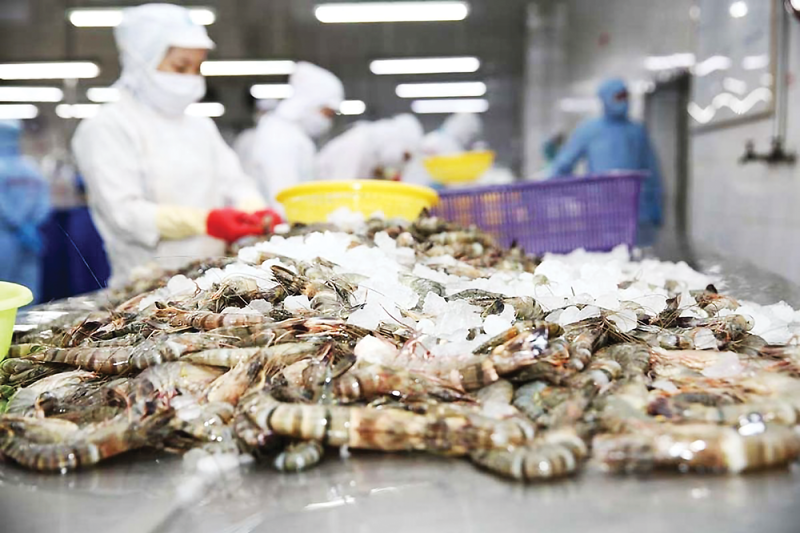China claims position as Vietnam biggest shrimp export market
In the fourth quarter of 2024, Vietnam’s shrimp exports to this market increased by 69 per cent, reaching a total value of $258 million.

After experiencing a decline in the second quarter of 2024, Vietnam’s shrimp exports to China and Hong Kong (China) rebounded strongly in the third and fourth quarters of the year, according to a report released by the Vietnam Association of Seafood Exporters and Producers (VASEP) on February 14.
In the fourth quarter of 2024, Vietnam’s shrimp exports to China, including Hong Kong, increased by 69 per cent year-on-year in volume, with a total value estimated at $258 million. For the entire year of 2024, shrimp exports to China and Hong Kong (China) amounted to $843 million, marking a 39 per cent increase compared to 2023.
This strong growth enabled China to surpass the United States, becoming Vietnam’s largest shrimp import market.
VASEP attributed this remarkable growth in the latter half of 2024 to several factors. Firstly, China’s domestic shrimp supply declined due to adverse weather conditions, creating greater demand for imported shrimp. Secondly, Ecuador, which is a major competitor to Vietnam in supplying shrimp to China, also experienced a decline in its exports to the market.
Ecuador primarily exports whiteleg shrimp to China, but in 2024, the country’s shrimp export value dropped by 14 per cent, reaching approximately $3 billion. In addition, the Chinese government introduced various measures to stimulate consumer spending, which further supported the increase in Vietnam’s shrimp exports to the country.
The positive growth trend continued into early 2025. In the first half of January 2025, Vietnam’s shrimp exports to China and Hong Kong (China) surged by 191 per cent compared to the same period in 2024, reaching over $51 million.
Regarding the composition of shrimp exports from Vietnam to China and Hong Kong (China) in 2024, other shrimp varieties, particularly lobsters, accounted for the largest share, making up 51.7 per cent of total exports. Whiteleg shrimp followed, comprising 36.1 per cent, while black tiger shrimp made up 12.2 per cent.
In contrast, exports of processed shrimp products declined more sharply than those of fresh, live, or frozen shrimp. Among these, processed black tiger shrimp saw the most significant drop, decreasing by 44 per cent. Vietnam’s whiteleg shrimp exports to China also declined by 5 per cent, reaching nearly $305 million.
However, exports of other shrimp varieties, including lobsters, saw significant growth, with an increase of 174 per cent in total exports. Specifically, exports of processed shrimp rose by 199 per cent, while live, fresh, or frozen shrimp of other types increased by 185 per cent.
A major driver of this growth was the sharp increase in Vietnam’s lobster exports to China, particularly live rock lobsters. Currently, China is the largest import market for Vietnam’s lobsters, accounting for 98–99 per cent of the total.
The decline in demand for whiteleg shrimp from China is not an isolated phenomenon but rather reflects the broader vulnerability of low-cost consumer goods to economic pressures in the country. In response to these challenges, VASEP recommends that Vietnamese seafood exporters continue to strengthen their competitive advantage in lobster exports. At the same time, they should also enhance marketing efforts and implement strategies to increase consumer demand for traditional shrimp products, particularly whiteleg shrimp and black tiger shrimp, in the Chinese market.







